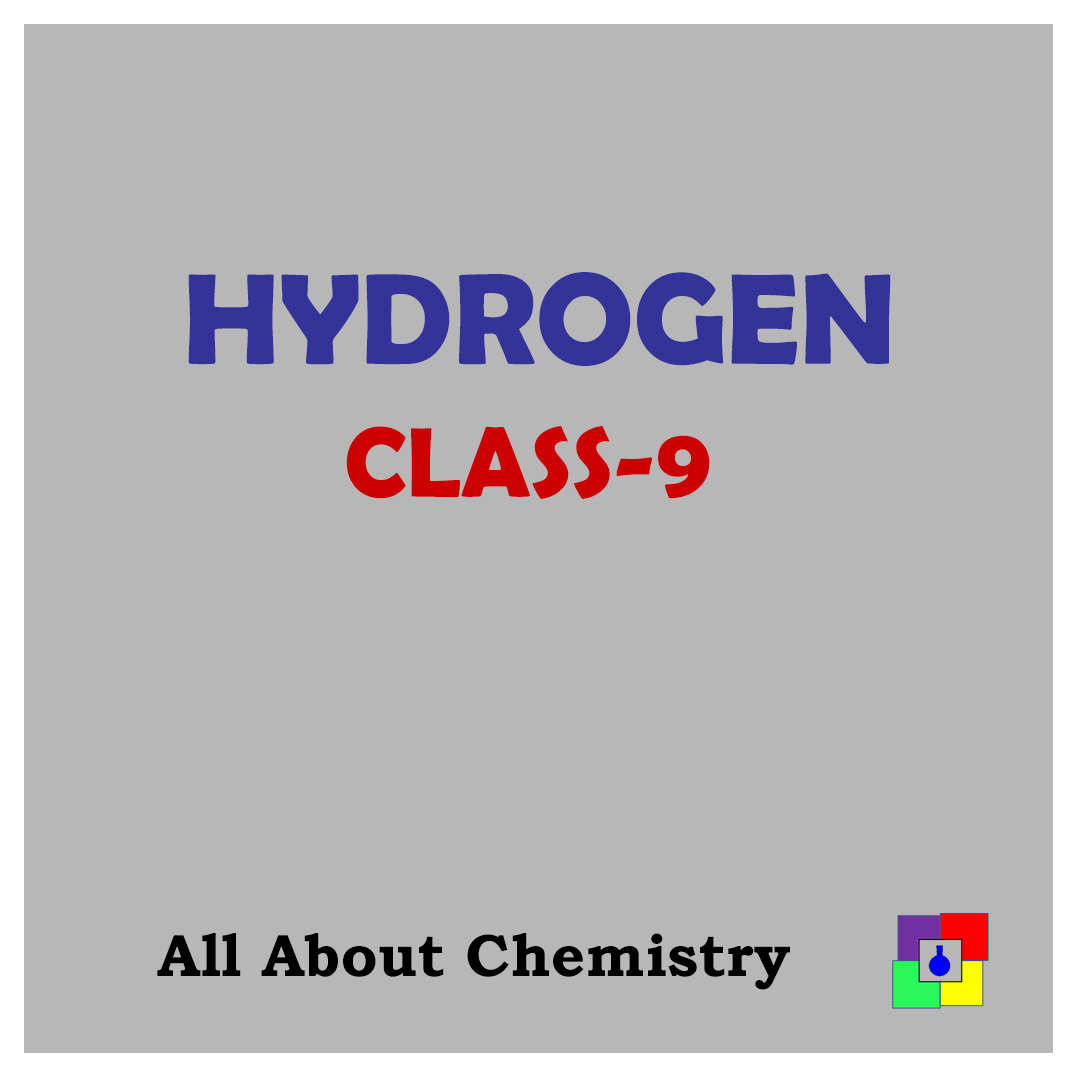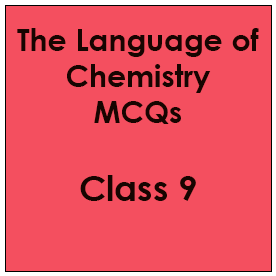Introduction
Alchemist Paracelsus, in the early 1500s, noted that when iron filings were added to sulphuric acid colorless bubbles comes out. The same observation was made by Robert Boyle in 1671. In 1766 Henry Cavendish collected the bubbles and showed that when the gas burns it forms water. The gas was given its name hydro-gen, meaning water-former, by a French chemist, Antoine Lavoisier. Hydrogen is the first element of the periodic table. It is the lightest gas.
Occurrence
Hydrogen is the most abundant element in the universe (7.5 x 105 ppm). It is also found in Sun (7.5 x 105 ppm), earth’s crust (1500 ppm), sea water (107800 ppm), meteorite (24000 ppm) and in our body (1 x 108 ppb).Stars contain unlimited supply of hydrogen. Giant planets like Jupiter and Saturn mostly contain hydrogen.Hydrogen occurs in traces in volcanic gases.Meteorites which are composed of iron , nickel and cobalt also contain hydrogen.It occurs chiefly in combined states as methane, ethane, ethene, ethyne, benzene, carbohydrates, hydracids etc.
The extreme high temperature of the sun is due to nuclear fusion of hydrogen atoms liberating a large amount of energy.
4 1H1 → 2He4 + -1e0 + Energy
| Abundance of hydrogen in | Position |
| Universe | 1st |
| Earth crust | 10th |
| Solar system | 1st |
| Sun | 1st |
| Earth’s mantle | 14th |
| Bulk Earth | 16th |
| Earth’s atmosphere | 10th |
| Ocean water | 2nd |
| Human body | 3rd |
| Human muscles | 3rd |
| Human bones | 4th |
| River water | 2nd |
Preparation of hydrogen
a) By the action of water with metals:
i) Cold water:
Very active metals like Na, K, Ca etc. react with cold water to liberate hydrogen. The reaction with alkali metals like Na and K is so vigorous and exothermic that the hydrogen gas evolved catches fire. In order to slow down the reaction, amalgams of these metals are generally used.
2Na + 2H2O→2NaOH + H2
2K + 2H2O→2KOH + H2
With calcium, the reaction can be easily controlled as the reaction is not so vigorous.
Ca + 2H2O→Ca(OH)2 + H2
ii)Boiling water:
Apparently less active metals like Zn, Mg, and Al produce hydrogen on reacting with boiling water.
2Al + 3H2O→Al2O3 + 3H2
Zn + H2O→ZnO + H2
Mg + H2O→MgO + H2
iii) Steam:
Less active metals like Ni, Sn, Co, Fe etc. reacts with water(steam) at red hot condition to produce hydrogen
3Fe + 4H2O→Fe3O4 + 4H2
b) By the reaction of metals with acids:
Metals which lie above hydrogen in the electrochemical series reacts with dilute acids like sulphuric acid and hydrochloric acid to produce hydrogen.
Fe + 2HCl→FeCl2 + H2
Mg + H2SO4→MgSO4 + H2
Zn + H2SO4→ZnSO4 + H2
Metals like copper, silver, mercury etc. which are less electropositive than hydrogen do not liberate hydrogen from acids.
c) By the reaction of amphoteric metals with alkali:
Some elements like Zn, Al, Pb, Sn, Si, Be etc. react with boiling alkali to produce hydrogen.
Zn + 2NaOH→Na2ZnO2 + H2
Al + 2NaOH + 2H2O→2NaAlO2 + 3H2
Si + 2NaOH + H2O→Na2SiO3 + 2H2
Sn + 2NaOH→Na2SnO2 + H2
Be + 2NaOH→Na2BeO2 + H2
d) By treating hydrides with water:
Hydrides of alkali and alkaline earth metals react with water to produce hydrogen.
NaH + H2O→NaOH + H2
CaH2 + 2H2O→Ca(OH)2 + 2H2
e) Laboratory preparation of hydrogen:
- Principle: In laboratory, hydrogen is prepared by reacting dilute sulphuric acid with granulated commercial Zinc.
Zn + H2SO4→ZnSO4 + H2
- Procedure: Place some pieces of commercial granulated zinc in a conical flask fitted with an airtight cork with two holes. Through one hole, pass a thistle funnel with a long stem and through the other, a long delivery tube. Pour dilute sulphuric acid through the funnel.
- Collection: Hydrogen is collected by downward displacement of water because :
- It is insoluble in water.
- Even though it is lighter than air, hydrogen cannot be collected by the downward displacement of air because it forms an explosive mixture with air.
- The common impurities present in the hydrogen gas prepared in the laboratory are – sulphur dioxide, carbon dioxide, water vapour, hydrogen sulphide, arsine, phosphine and nitrogen dioxide.
| Impurity | Removed by | Reaction |
| Arsine (AsH3) | AgNO3 solution | AsH3 + 3AgNO3 → Ag3As + 3HNO3 |
| Phosphine (PH3) | AgNO3 solution | PH3 + 3AgNO3 → Ag3P + 3HNO3 |
| Hydrogen sulphide(H2S) | Lead nitrate solution | Pb(NO3)2 + H2S → PbS + 2HNO3 |
| SO2, CO2, NO2 | KOH solution | SO2 + 2KOH → K2SO3 + H2O CO2 + 2KOH → K2CO3 + H2O 2NO2 + 2KOH → KNO2 + KNO3 + H2O |
| Water vapour | Fused CaCl2 or P2O5 or KOH stick |
The pure and dried gas is then collected over mercury as mercury does not react with hydrogen.
- Precautions:
- The apparatus used for the preparation of hydrogen gas should be airtight and should be kept away from the flame as hydrogen forms an explosive mixture with oxygen.
- The lower end of the thistle funnel should dip in the acid as otherwise, the gas will escape from the thistle funnel.
- Note:
- Pure zinc is not used as it slowly reacts with dilute sulphuric acid. If pure zinc is used, a few drops CuSO4 solution should be added to increase the reaction rate.
- Commercial zinc contains impurities like Cu, Cd, etc. help to speed up the reaction by forming an electrochemical couple.
- Conc. H2SO4 is a strong oxidizing agent. It oxidized hydrogen to water and itself gets reduced to sulfur dioxide.Zn + 2H2SO4 → ZnSO4 + SO2 + H2O
- The hydrogen gas produced in the above process has a peculiar smell due to the impurities arsine and phosphine.
- Conc.HCl cannot be used in the preparation of hydrogen as the produced hydrogen will contain fumes of volatile HCl. Moreover, zinc chloride produced in the reaction is insoluble in HCl and pause the reaction.Zn + 2HCl → ZnCl2 + H2
- Nitric acid is not used to prepare hydrogen as it is a strong oxidizing agent. It oxidizes hydrogen to water and it gets reduced to nitrogen dioxide.Zn + 4HNO3 → Zn(NO3)2 + 2H2O + 2NO2
- Mg and Mn are the only metals that react with very dilute nitric acid to produce hydrogen gas.Mg + 2HNO3 → Mg(NO3)2 + H2
- Zinc is preferred in the laboratory preparation of hydrogen than other metals as-
- Sodium and potassium react explosively with acid.
- Calcium and magnesium are expensive and produce hydrogen rapidly.
- Aluminum gets coated with Al2O3 due to its great affinity with oxygen. This layer prevents the reaction of the metal with dilute acids.
- Iron slowly reacts with acids to produce hydrogen.
- Lead reacts with sulphuric or hydrochloric acid to form an insoluble coating of lead sulfate or lead chloride, thus preventing further reaction.
- Copper and mercury lie below hydrogen in the activity series, thus cannot displace hydrogen from dilute acids.
f) Bosch Process:
It consists of the following steps:
- Steam is passed over hot coke (10000C) in converters when coke is oxidised to water gas (1:1 mixture of CO and H2). This process is known as coal gasification.
C + H2O → (CO + H2) – ∆
Water gas
- Water-gas is mixed with excess steam and passed overheated (4000C) ferric oxide to produce carbon dioxide and hydrogen. In this process, ferric oxide acts as a catalyst and chromic oxide acts as a promoter.
(CO+ H2) + H2O → CO2 + 2H2 + ∆
- The above resultant mixture of gases is passed through the caustic soda solution, which dissolves carbon dioxide, leaving behind hydrogen.
CO2 + 2KOH → K2CO3 + H2O
- The mixture is finally passed through an ammoniacal cuprous chloride solution in order to dissolve any uncombined CO.
CuCl + CO + 2H2O → CuCl.CO.2H2O
Thus, hydrogen gas is left behind.
- The conditions which provide a maximum yield of hydrogen in the manufacture of hydrogen by the Bosch process are the following:
- The concentration of steam needs to be increased to favor the forward reaction.
- The concentration of the product should be reduced.
- As the volume of the reactant and product are the same, there is no influence of pressure in this process.
- As the forward reaction is exothermic, the temperature of the system should be decreased. But very low temperature slows the reaction. Thus an optimum temperature of 4500C is maintained to obtain a satisfactory yield of water gas.
g) By electrolysis of water:
Pure water is a poor conductor of electricity thus, in order to make it conductor, dilute sulphuric acid or 20% NaOH solution is added.
NaOH being a strong electrolyte, in aqueous solution it dissociates completely to Na+ and OH– ions. Water is a weak electrolyte, it furnish small amount of H+ and OH– ions. Hydrogen being less electropositive than sodium is preferentially discharged at the cathode as hydrogen gas by accepting electrons. OH– is discharged at the anode as water and oxygen by losing electrons.
NaOH→Na+ + OH– , H2O→H+ + OH–
At cathode:
H++ e → H
H + H → H2↑
Hydrogen gas is evolved at the cathode.
At anode:
OH– – e → OH
4OH → 2H2O + O2↑
Oxygen gas is evolved at the anode.
Properties of hydrogen
Physical properties of hydrogen:
| Colour | Colourless |
| Taste | Tasteless |
| Odour | Odourless |
| Density | 0.08988g/L (00C , 1atm) |
| Relative vapour pressure | 0.07 |
| Melting point | -259.350C |
| Boiling point | -252.880C |
| Solubility in water | Slightly soluble |
| Bond dissociation energy | 436 kJ/mol |
| First I.P | 1311 kJ.mol -1 |
| Speed of sound(400K, 1atm) | 1518m/s |
Chemical properties of hydrogen:
The chemical properties of hydrogen depend mainly on its bond dissociation energy. Due to high bond dissociation energy (436 kJ/mol), high energy is required to break the H-H bond. This makes hydrogen quite stable and unreactive at ordinary temperature. Majority of the reactions of hydrogen takes place at a high temperature or in presence of ultraviolet radiation.
Combustion:
Hydrogen is a combustible gas but is a non-supporter of combustion. When burnt, it burns with a pale blue flame in air or oxygen forming water. This reaction is highly exothermic (283kJ/mol)
2H2 + O2 → 2H2O
Reaction with metals:
At high temperature, hydrogen reacts with strong electropositive metals like Na, K ,Ca etc. to produce metal hydrides.
H2 + 2Na →2NaH
H2 + Ca→CaH2
Reaction with non-metals:
Reaction with halogens:
The reactivity of hydrogen with halogens decreases with the decrease in the reactivity of the halogens. F2>Cl2>Br2>I2
- Hydrogen reacts with fluorine in dark at ordinary temperature to produce hydrogen fluoride.H2 + F2 → 2HF
- In the presence of sunlight, hydrogen reacts with chlorine to produce hydrogen chloride. H2 + Cl2 → 2HCl
- At about 4000C, hydrogen reacts with bromine to produce hydrogen bromide.H2 + Br2 → 2HBr
- At about 4000C, in presence of Pt catalyst, hydrogen reacts with iodine to produce hydrogen iodide.H2 + I2 → 2HI
Reaction with nitrogen:
At 673K, at 200 atm pressure, in presence of Fe catalyst and Mo promoter, nitrogen reacts with hydrogen (1:3) to produce ammonia. This reaction is used to manufacture ammonia industrially by Haber’s process.N2 + 3H2 → 2NH3
Reaction with sulphur:
At 700K, when hydrogen gas is bubbled through molten sulphur, hydrogen sulphide gas is produced.H2 + S → H2S
Reaction with carbon:
Hydrogen reacts with carbon at 1275K to produce methane in the presence of Co or Ni catalyst. 2H2 + C → CH4
At a further higher temperature (3300K), acetylene gas is produced.
2C + H2→C2H2
Reduction of metal oxides and ions:
Hydrogen acts as a reducing agent. It can reduce oxides of some metals like Pb, Fe, Cu, Zn etc. to the corresponding metals.
CuO + H2 → Cu + H2O
ZnO + H2 → Zn + H2O
PbO + H2 → Pb + H2O
Fe3O4 + 4H2 → 3Fe + 4H2O
Oxides of strong electropositive elements like alkali metals and alkaline earth metals cannot be reduced by hydrogen.
Hydrogen can also reduce some metal ions (metals lying below hydrogen in the activity series) in aqueous solution.
Pd2+ + H2 → Pd + 2H+
Cu2+ + H2 → Cu + 2H+
Isotopes of hydrogen:
Hydrogen has three stable isotopes protium(1H1), deuterium(1H2) and tritium(1H3). Beside these isotopes, 1H4, 1H5,1H6,1H7 are also possible. These four isotopes are radioactive with very little half-life.
| Isotope | Half Life |
| 1H4 | 139 yoctoseconds |
| 1H5 | 910 yoctoseconds |
| 1H6 | 290 yoctoseconds |
| 1H7 | 23 yoctoseconds |
| Properties | Protium(1H1) | Deuterium(1H2) | Tritium(1H3) |
| Symbol | H | D | T |
| Number of neutrons | 0 | 1 | 2 |
| Relative abundance | 99.98% | 0.0026-0.0184 | 10-15 |
| Nuclear spin | +1/2 | +1 | +1/2 |
| Relative mass | 1.00782503207 | 2.0141017778 | 3.0160492777 |
| Radioactive nature | Non-radioactive | Non-radioactive | Radioactive. emitter |
| Half-life | – | – | 12.33years |
| Melting point(0C) | -259 | -254.3 | -252.4 |
| Boiling point(0C) | -252.6 | -249.3 | -248.0 |
| Latent heat of vaporisation(kJ/mol) | 0.904 | 1.226 | 1.393 |
| Latent heat of fusion(kJ/mol) | 0.117 | 0.197 | 0.250 |
| Density(g/L) | 0.09 | 0.18 | 0.27 |
| Critical temperature(0C) | -239.8 | -234.6 | -232.4 |
| Nuclear magnetic moment (μ/μN) | 2.7928456 | 0.8574376 | 2.978960 |
| Binding energy | 0 | 2224.52± 0.20 keV | 8,481.821± 0.004 keV |
| Uses | i. Protium is used in hydrogenation of nitrogen, carbon monoxide , coal and unsaturated or liquid fats . ii. Protium is used to prepare pure tungsten . iii.It is used in the production of high temperature by suggests of oxyhydrogen flame for welding purposes. iv. Protium is used in filling balloons and dirigibles. | i. Deuterium is applied as a tracer, in different physical, chemicaland biological reaction. ii. Heavy water (D2O) is used in nuclear fission reactors to slow down the fission process. iii. Deuterium also act as a potential fuel for commercial nuclear fusion. | i. Tritium is used to produce betalights, which are now used in watches. ii. It is used to enhance the efficiency and yield of fission bombs. iii. It is used in making different thermonuclear device. |
Uses
- Hydrogen is used in the manufacture of ammonia by Haber’s process.
- In the manufacture of metal hydrides, HCl, methanol and vegetable ghee(hydrogenation of vegetable oil to solid form).
- In airships and weather balloons as a mixture of hydrogen and helium (15% H2 + 85% He) is taken.
- In the manufacture of synthetic petrol by heating coal and heavy oils in the presence of catalyst under high pressure.
- In atomic hydrogen( 4000K) and oxy-hydrogen torches(2770K) for welding and cutting of metals.
- Liquid hydrogen is used as a rocket fuel in space programme.
- In metallurgy, it is used as a reducing agent to obtain certain metals like Pb, Fe, Cu, Zn etc.from the respective metal oxide.









